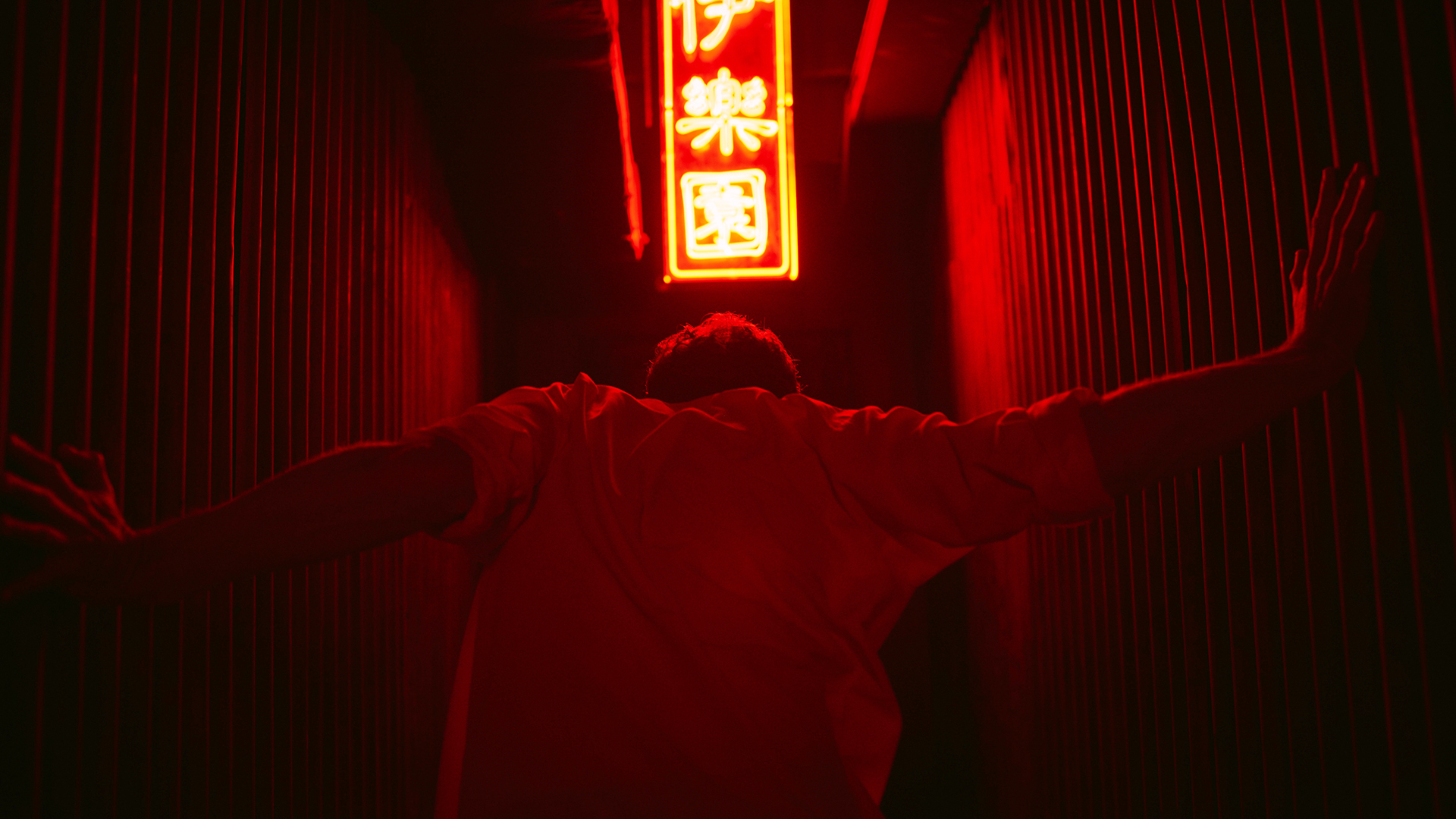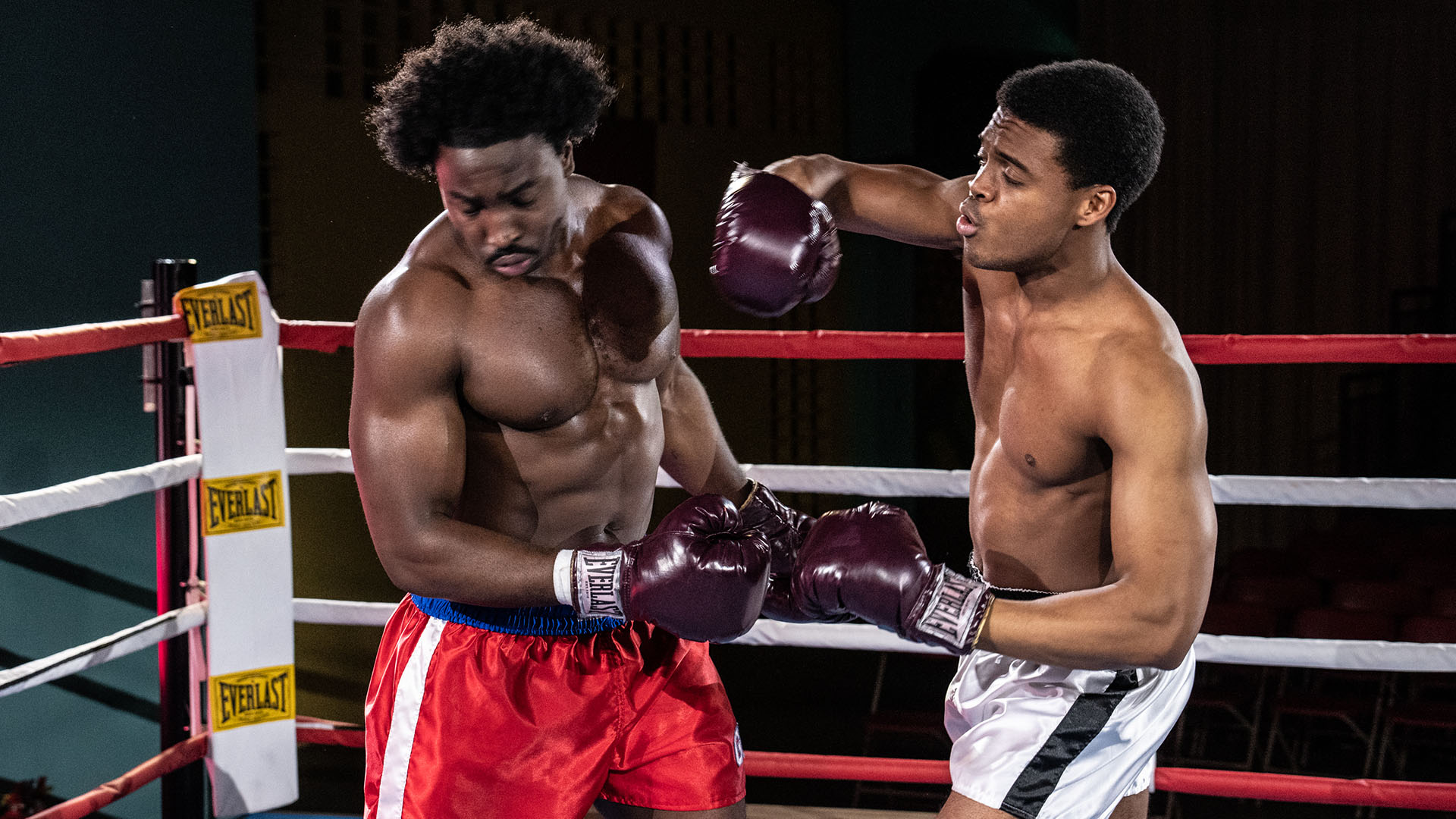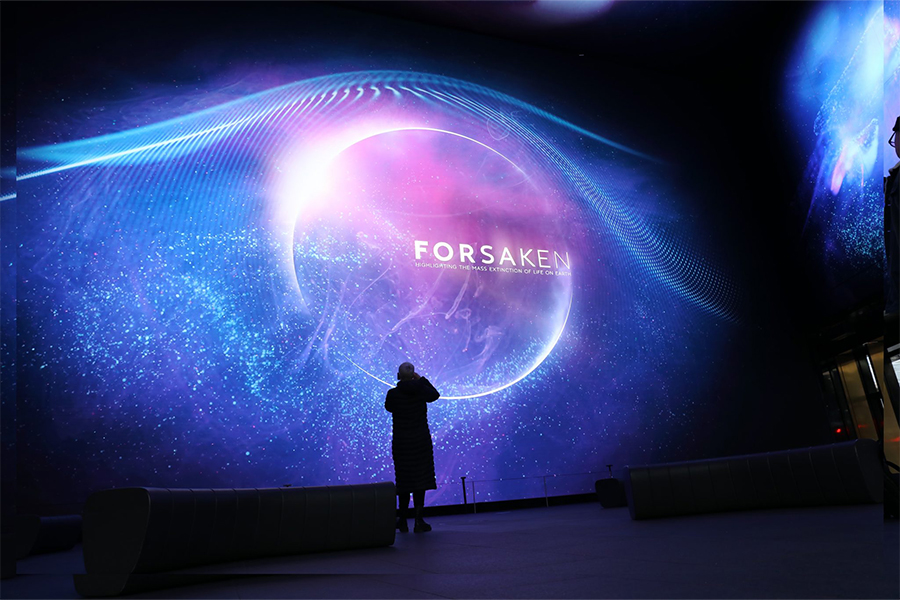Award-winning immersive theatre company Punchdrunk have shared the lessons they’ve learned in a new handbook. We’ve selected six that’ll help you design better experiences.
Established in 2000, Punchdrunk changed the game and raised the bar for the delivery of transformational experiences. You may not also realize that their practice isn’t limited to entertainment. They also bring impactful productions to schools and care homes, and show sensitivity to the capabilities of all facilities and participants.
Have You Ever Felt Punch Drunk?
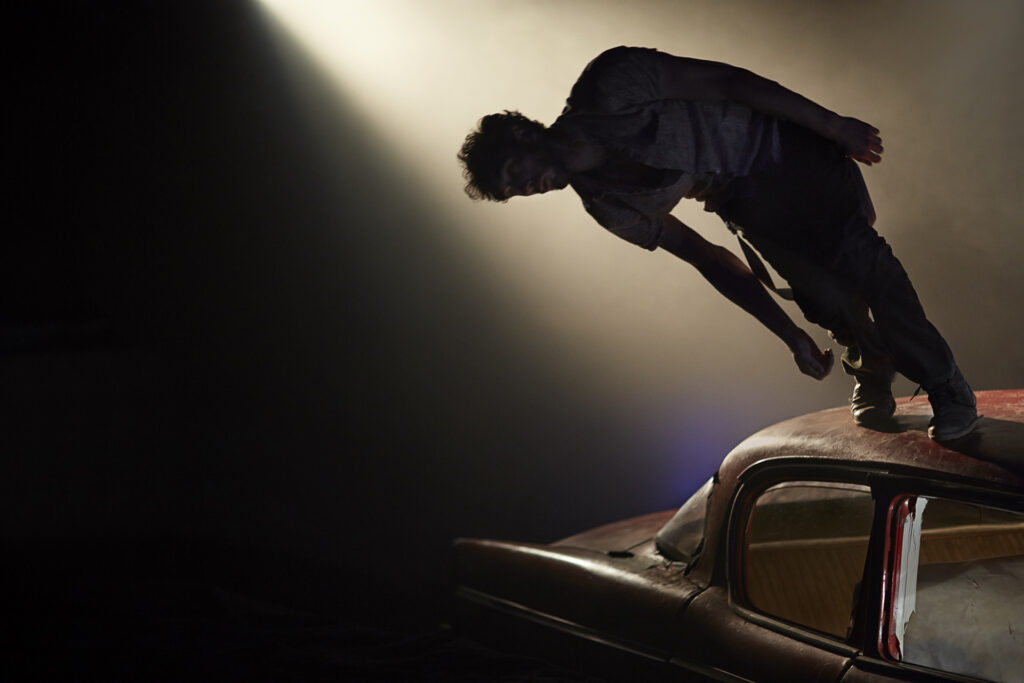
The name comes from their aim: with each production, Punchdrunk want their audience members to feel “punch drunk”, that is, receptive, free, fully tuned in, viscerally emotionally impacted and all their senses stimulated.
In a new handbook, Punchdrunk: A Guide for Students and Teachers, they share some of the lessons and insights they’ve learned in two decades of immersive experiences.
No matter what type of experiences you design, we think the handbook contains a wealth of useful detail that’ll really make you think. We’ve selected six ideas that we believe should help every experience designer create more impactful, immersive experiences that make your audience more receptive.
1. Holistic Atmosphere
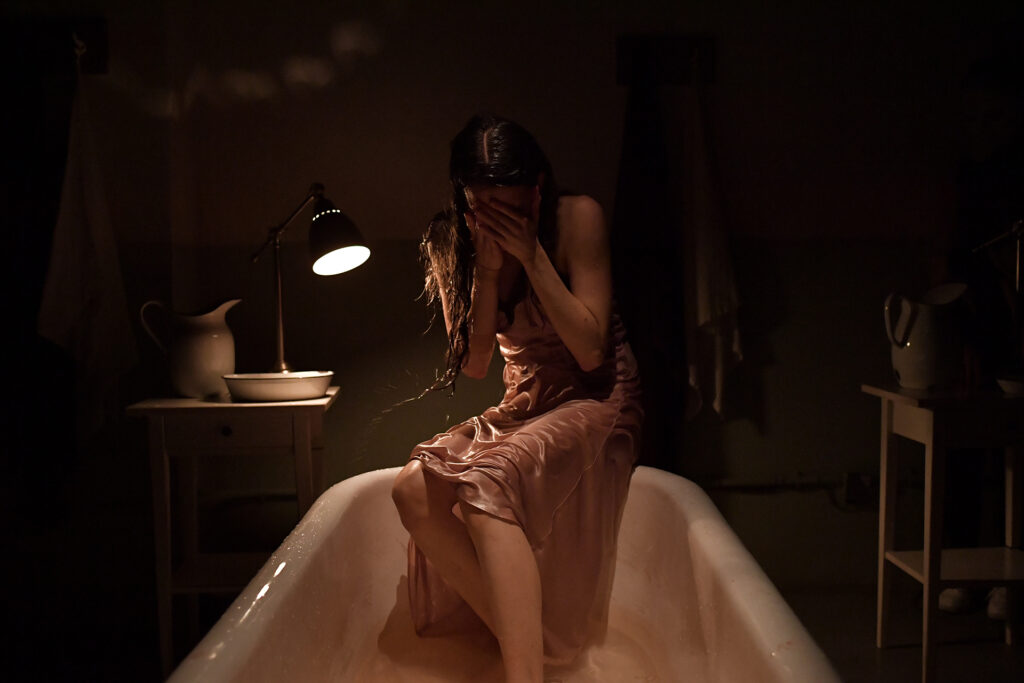
Punchdrunk’s attention to their mise en scène is forensic and covers aspects others might have overlooked, such as smell and temperature.
Obviously you won’t let your space smell like a drain, but what effect can subtle shifts in smell achieve, or signature smells? The links between smell and memory are well-documented. See What The Nose Knows, a 2020 article in the Harvard Gazette. Careful deployment of certain smells can cement memory of the experience you’re providing in the long-term.
Temperature is another useful ingredient to play with. Of course you’re not going to let your users get either too hot or too cold, but how do incremental changes in temperature impact their mood and receptivity to the space? If it’s cold outside, you might not want to blast them with hot air the moment they come inside. They’ll want to take their coats off, and then have to lug them around inconveniently.
Either that, or get a cloakroom! And even then, this requires careful consideration:
- Are your audience members getting a measly raffle ticket they’re at risk of losing, or does the cloakroom token somehow link aesthetically with the experience they’re about to enter?
- Can the cloakroom experience be used as a buffer zone between entry and exit of the experience?
The same could apply for a car park attendant or a valet service. - Think beyond the main show: what processes are your audiences going through to get to you? How you can use these processes to prime your audience members before they do?
2. The Mask
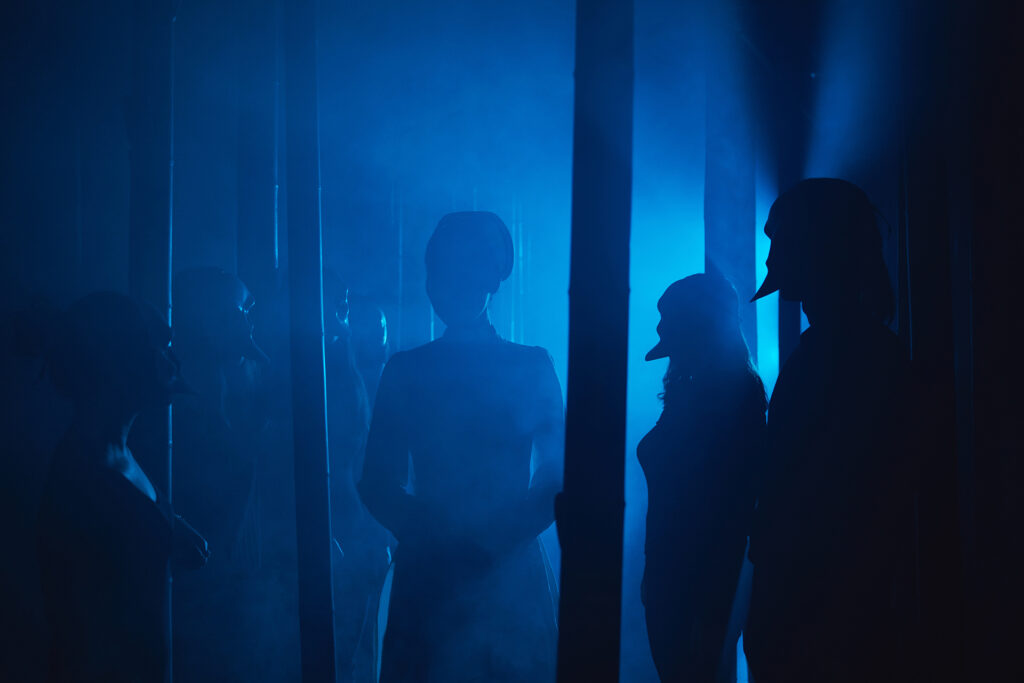
Masks are a signature of Punchdrunk’s larger shows, where audience members are instructed to wear them. This helps to demarcate between audience and performer while still allowing for a totally immersive performance.
The slight eeriness can help to heighten dramatic tension too. And the element of anonymity can help audience members loosen up, shake off inhibitions, and become more receptive to participation.
No matter what sort of experiences you design, this simple trick helps demarcate smoothly between experience recipient and experience provider, while still bringing the recipient into the process in a way that makes them feel empowered and valued.
3. Total Soundscore
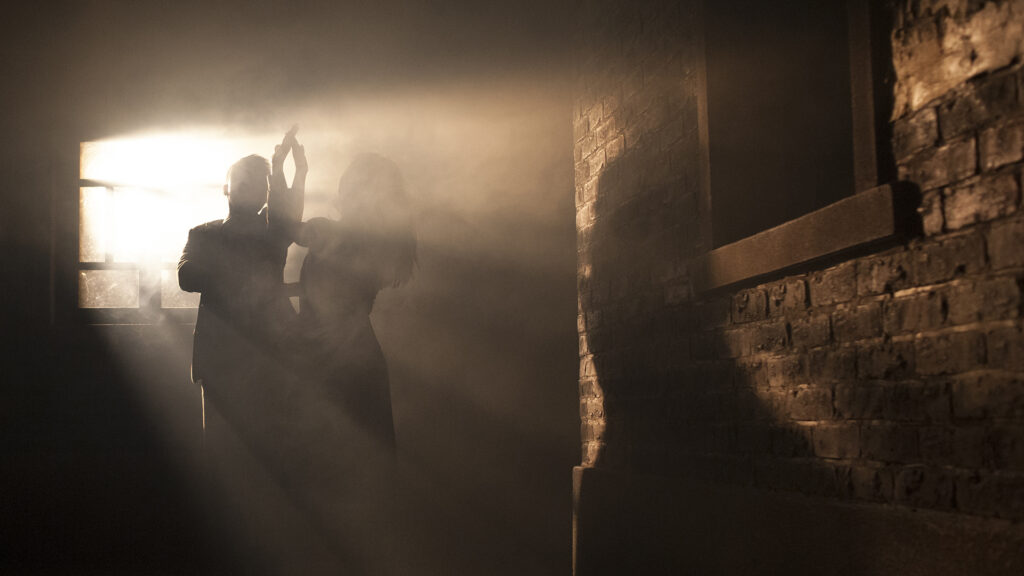
Punchdrunk think about the full “aural composition” of a space and the piece taking place in it. This includes music, obviously, but also narration, the placement of speakers to control the directionality of sound through the space, and more abstract, ambient sounds. These are important too.
In other words:
- What impact is your ventilation system having on your audience’s perceptions of their experience?
- What are the benefits of wooden versus linoleum flooring, wood versus marble tabletops?
- How much sound can you hear coming from outside the space?
- How much are audience members contributing to the soundscore, and how much do they feel invited or welcome to do so?
- Which sounds are enriching the aural texture of your space, and which ones are taking away from it?
4. Total Space

Even the supposedly utilitarian aspects of your space should be considered. Immersion should begin on entry. Audience members need to leave the outside world at the door. Of course, they bring a certain amount of their own willingness, but they’re all the more appreciative of the details.
- How can spaces like staircases, corridors, and even bathrooms enhance the experience?
- How can you fast-track people’s immersion and prime their emotional state through strategic detail?
5. Touch-Real
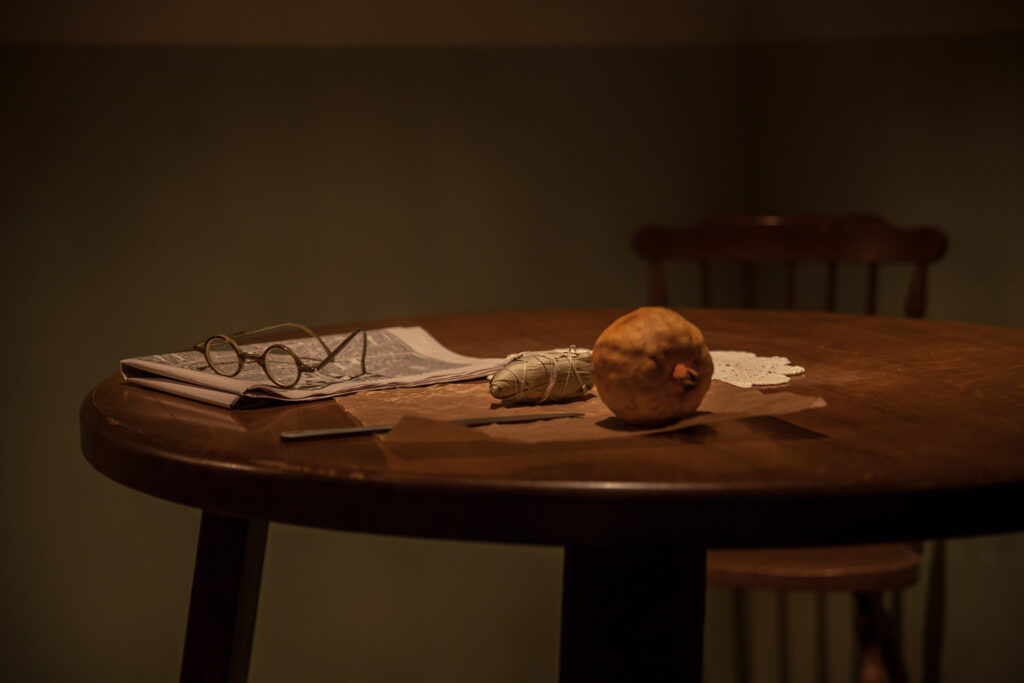
This is Punchdrunk’s expression for the level of detail they strive for in all their installations. When it comes to their sets, this is as from a painted backdrop that requires a suspension of disbelief as you can get. In fact, ‘sets’ isn’t really the right word at all for what Punchdrunk do.
Their designers want audience members to feel entitled to rummage in drawers, and to be rewarded with hand-written letters and dog-eared books.
Touch-real is an invitation, an enticement, a dare. It says “Go on, try me”, and can be a surefire way to bring people in and get a positive response.
6. Radical Promenade
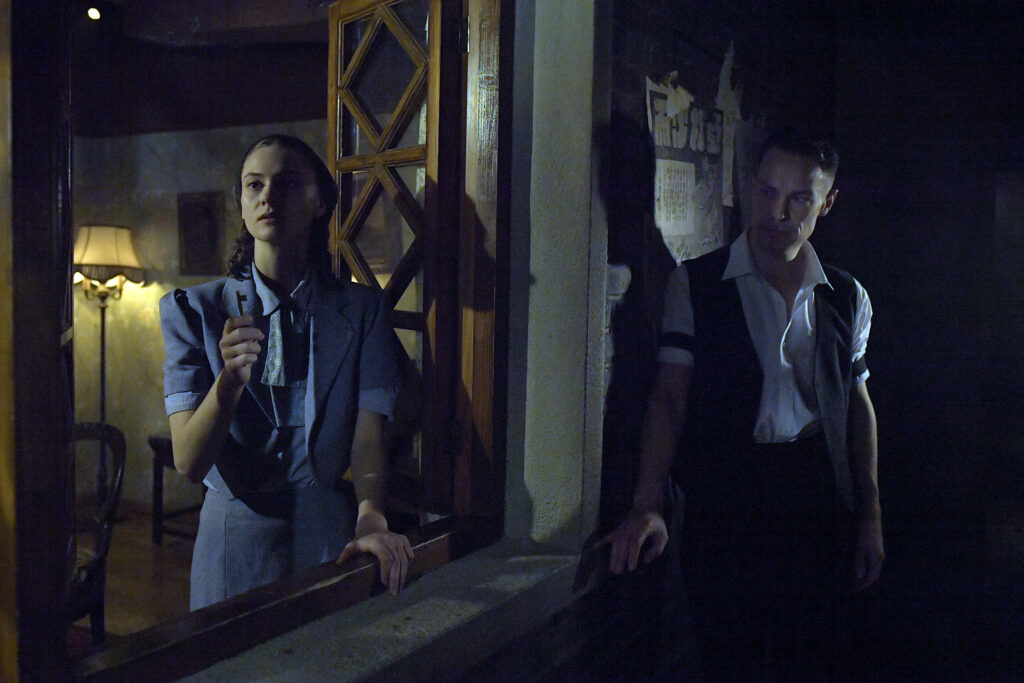
Promenade theatre – where the audience follows the actors around – is now an established way of presenting a story. Punchdrunk’s promenade is radical in that they turn the audience into active participants – supporting characters, even – without whom certain story arcs could not come to an end. Though each story is highly scripted, they do involve a high degree of flexibility on the part of performers – who must act as their characters and as crowd control. They have to make sure the audience move to where they need to be, while making sure they remain totally immersed and invested in the story.
If you are attempting this sort of ‘radical promenade’ – and since we believe you should – you should ask:
- How can you solve the problems of basic functionality and a smooth running of your operation, in the smoothest possible way for your audience?
- If you’re designing a retail space, what does this mean for you?
WXO Take-out
We believe that each of these six should be useful for everyone who seeks to design and stage great experiences.
Which strikes you as most useful to you in your work? Which seems hardest to implement? Let us know. We’d love to hear
(And if you want more from Punchdrunk, click here for the handbook. If you really want to dive in, there are even exercises at the end 🙂

